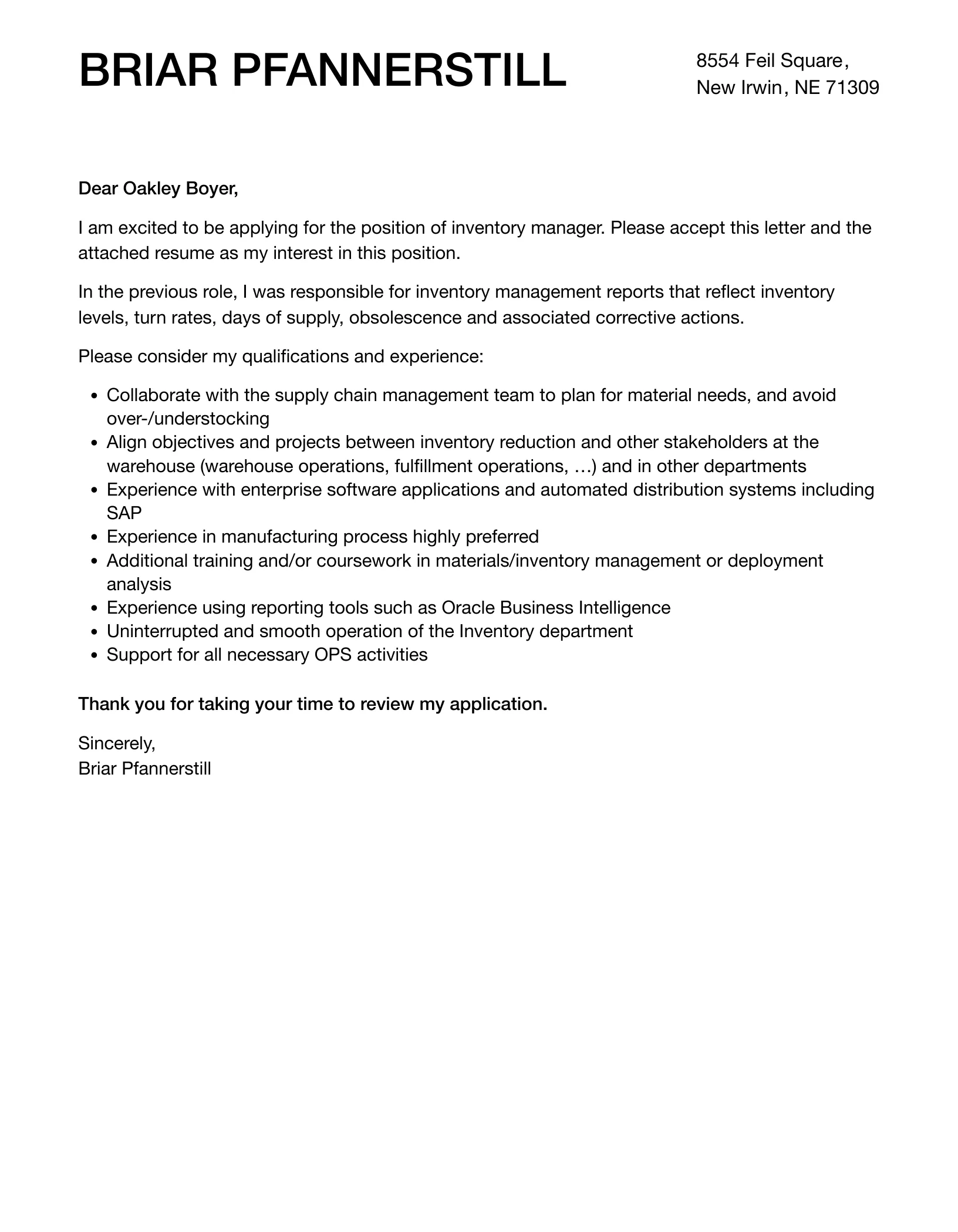Crafting a Compelling Cover Letter
A well-crafted cover letter is your first impression on a potential employer. It’s more than just a formality; it’s your opportunity to showcase your unique skills and experiences and explain why you’re the perfect fit for the Inventory Manager role. A compelling cover letter should go beyond simply restating your resume; it should provide context, demonstrate enthusiasm, and highlight how your qualifications align with the specific requirements of the job. This means tailoring each cover letter to the specific company and position, paying close attention to the details in the job description and the company’s values. Begin by researching the company to demonstrate your interest and understanding of their operations. This will help you tailor your letter and make a more persuasive case for your candidacy. Make it clear that you have reviewed the requirements and are prepared to succeed.
Highlighting Inventory Management Skills
The core of your cover letter should focus on your inventory management skills. This is where you demonstrate your ability to effectively manage stock levels, track inventory, and implement efficient warehousing and distribution processes. Focus on the skills most relevant to the job description, like inventory control, supply chain management, and logistics. Provide specific examples of how you’ve successfully managed inventory in past roles, mentioning the size of the inventory you’ve managed, the types of products involved, and any improvements you’ve achieved. For example, did you implement a new system that reduced carrying costs? Did you streamline a process that increased efficiency? Quantify your achievements whenever possible, using numbers to illustrate your impact. Highlight skills such as forecasting, demand planning, and vendor management.
Quantifying Achievements
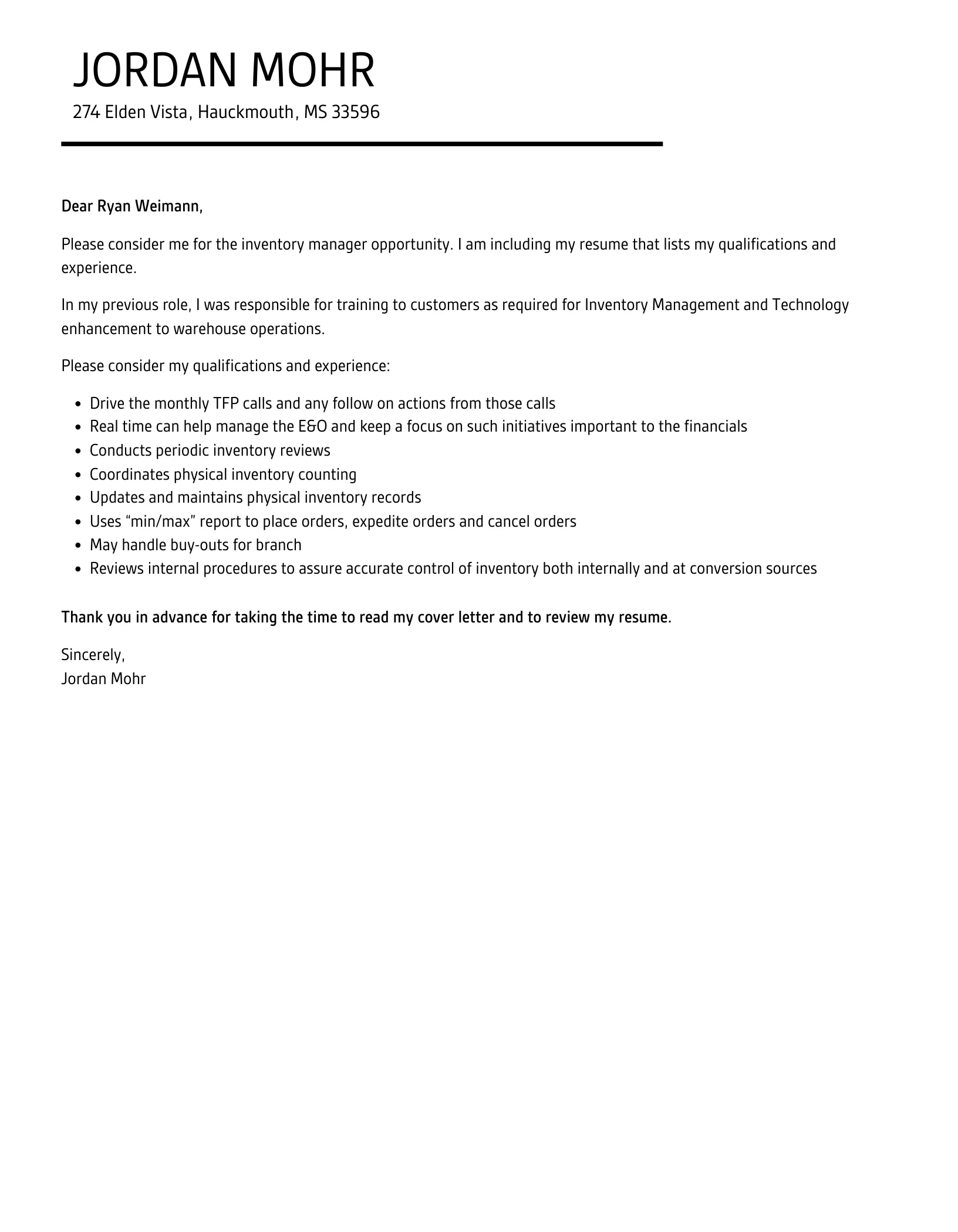
Instead of just listing responsibilities, use your cover letter to quantify your achievements. Employers want to see how you’ve made a difference in previous roles. This involves providing concrete examples backed by data. For instance, instead of stating that you ‘reduced inventory discrepancies’, write, ‘Reduced inventory discrepancies by 15% within six months through the implementation of a new cycle counting system.’ Similarly, if you improved the efficiency of warehouse operations, state the percentage or the amount of time you saved. If you implemented a new inventory system that led to cost savings, specify the monetary value or the percentage of savings. Quantifying your achievements not only provides compelling evidence of your abilities but also clearly demonstrates the value you can bring to a new company. This makes your cover letter more persuasive and memorable.
Showcasing Technical Proficiency
Inventory managers today must be proficient in a range of software and technologies. Your cover letter is the perfect place to highlight this technical expertise. List the specific software you’re skilled in, such as ERP systems (like SAP or Oracle), WMS (Warehouse Management Systems), and any other inventory management software. Mention any experience with data analysis tools, such as Excel or more advanced analytics platforms. Highlight your ability to use these tools to generate reports, analyze data, and make data-driven decisions. Include any experience with technologies like barcoding, RFID, or automated inventory systems, as this demonstrates your adaptability and willingness to embrace new technologies. Always tailor these mentions to match the requirements listed in the job description, and be sure to state your level of proficiency with each tool or system.
Demonstrating Attention to Detail
Inventory management requires meticulous attention to detail, so your cover letter should implicitly and explicitly demonstrate this skill. Carefully proofread your cover letter for any spelling or grammatical errors. A flawless cover letter showcases your ability to be accurate and precise. Also, choose specific examples that reflect your attention to detail. For example, you can mention how you improved inventory accuracy through rigorous cycle counts, or how you identified and corrected discrepancies in inventory records. You might explain how you use tracking systems or audits to manage inventory. In addition, showcase your ability to identify problems, analyze data, and implement solutions to improve accuracy. By demonstrating attention to detail in your cover letter, you build confidence in your ability to manage inventory with the same level of care and precision.
Structuring Your Cover Letter
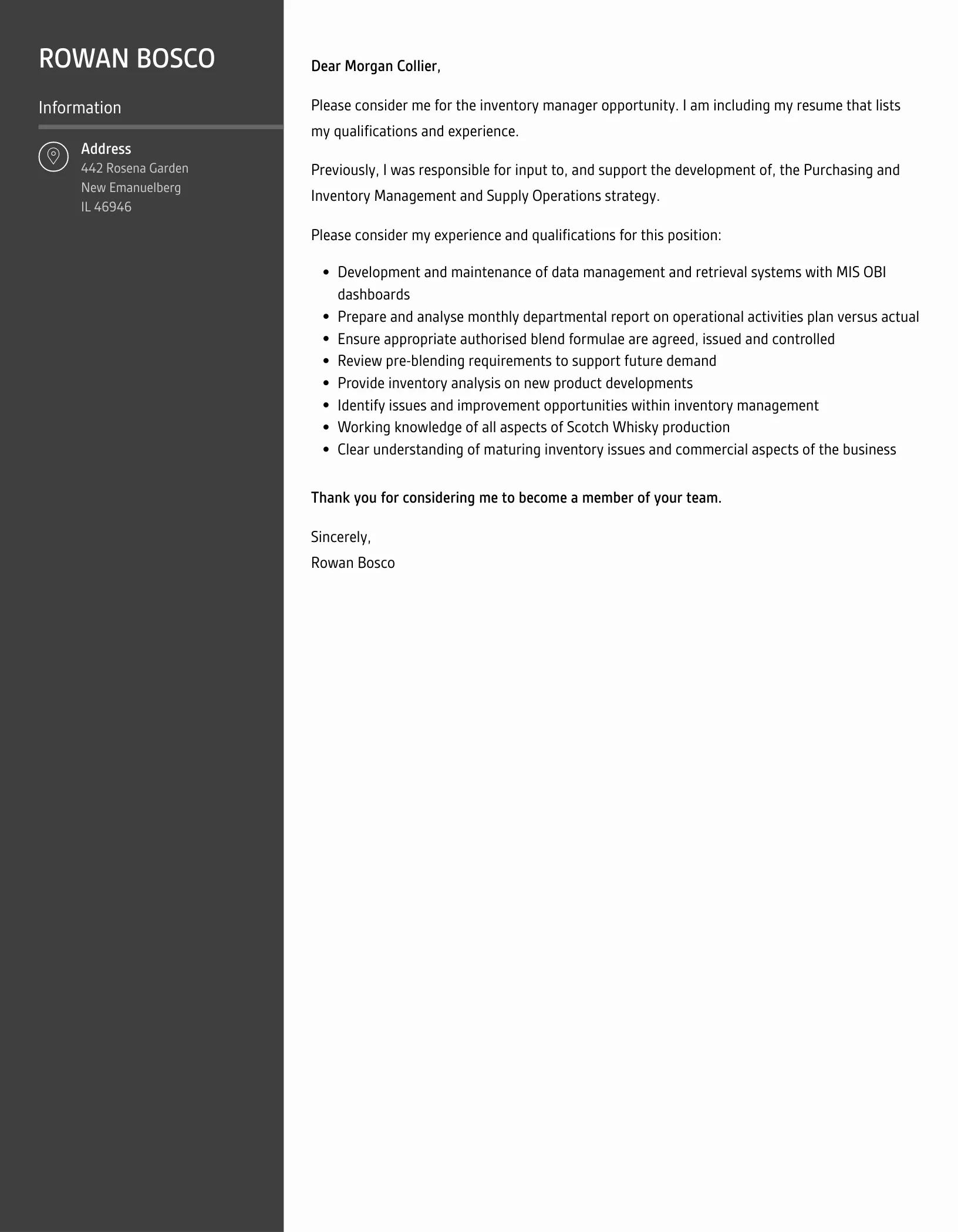
Opening Paragraph Essentials
Your opening paragraph sets the tone for your entire cover letter. It should immediately grab the reader’s attention and clearly state the position you are applying for and how you found the job. Mention where you saw the advertisement and consider including a brief statement about why you’re excited about the opportunity, and the company. It’s essential to highlight a relevant skill or experience, which can be tailored to match the job description. For example, mention the number of years of experience you have or highlight a specific achievement directly related to inventory management. This makes an excellent first impression and entices the reader to continue reading. Avoid generic openings and use a statement that is tailored to the specific role and organization.
Middle Paragraph Strategies
The middle paragraphs form the main body of your cover letter, where you showcase your qualifications and experiences in detail. Instead of simply repeating your resume, use these paragraphs to provide context and elaborate on your key achievements. When describing your work history, focus on experiences that align with the requirements of the job description. Quantify your achievements to show your impact. Use the STAR method (Situation, Task, Action, Result) to provide specific examples of how you have handled various situations and what outcomes you achieved. In addition, be sure to use a clear and concise writing style. Keep paragraphs focused and easy to read, making sure that the main points are easily understood. Keep your tone professional and enthusiastic, demonstrating your interest in the role and the company.
Closing Paragraph Best Practices
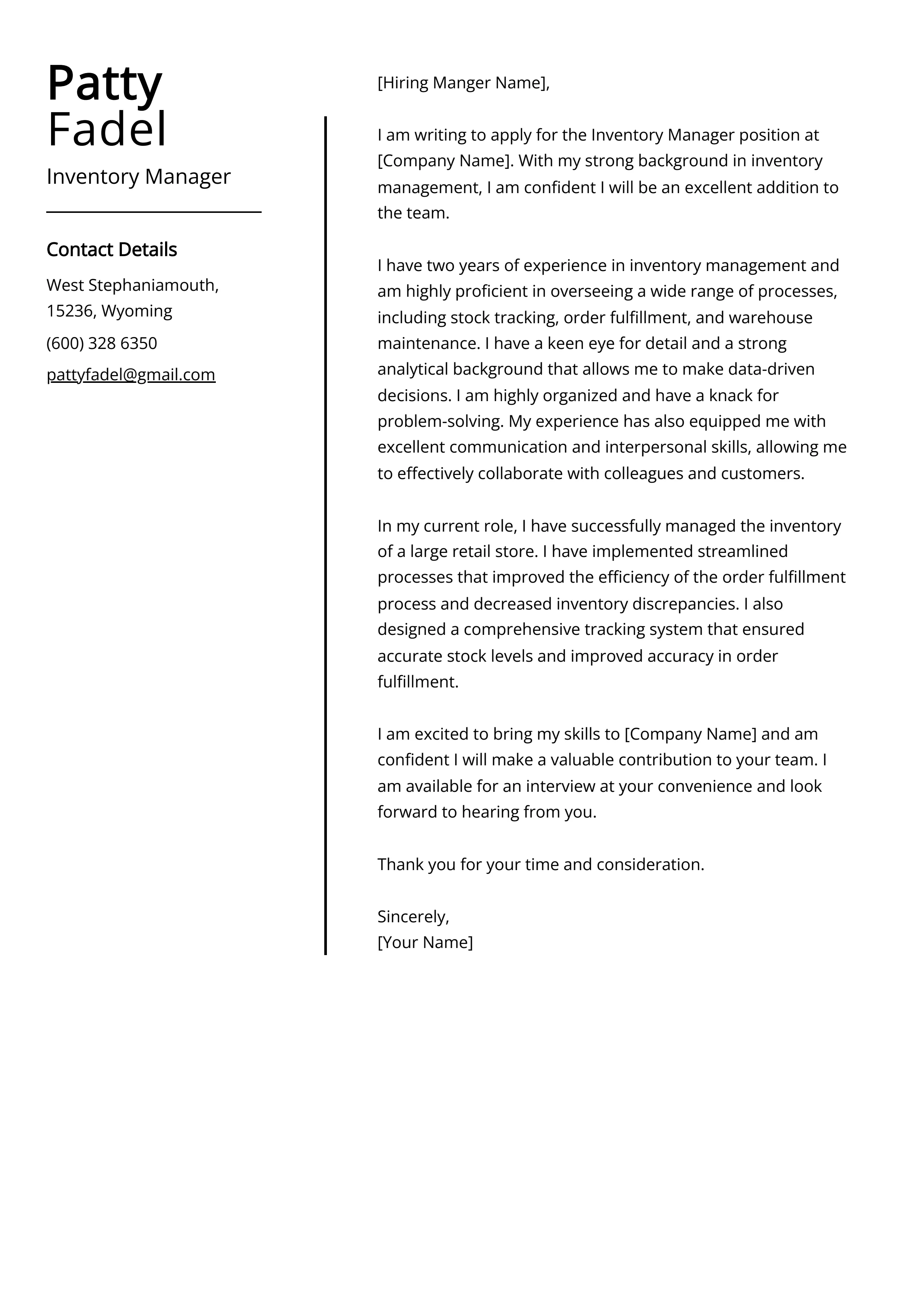
Your closing paragraph should reiterate your interest in the position and express gratitude for the hiring manager’s time and consideration. Reiterate your enthusiasm for the opportunity. Summarize your key skills and accomplishments and how they match the job requirements. Include a clear call to action, such as a statement that you are looking forward to discussing your qualifications in more detail in an interview. Provide your contact information so that the hiring manager can easily get in touch. Ensure that the tone is professional and confident and that the closing paragraph leaves a lasting positive impression. Proofread the entire letter, including the closing paragraph, one last time for any errors.
Tailoring Your Cover Letter
Researching the Company
Before you write your cover letter, take time to research the company. Look at their website, read recent news articles, and check their social media presence. This helps you understand their values, mission, and recent activities. Use this knowledge to tailor your cover letter to the company. Show that you understand their business and are genuinely interested in their success. When addressing the company, find the name of the hiring manager. If you cannot locate this, using ‘Dear Hiring Manager’ is a professional and acceptable alternative. Refer to their specific products, services, or recent achievements to demonstrate that you’ve done your homework and are interested in the company. Highlighting your knowledge of the company increases the likelihood of capturing the reader’s attention.
Addressing Specific Job Requirements
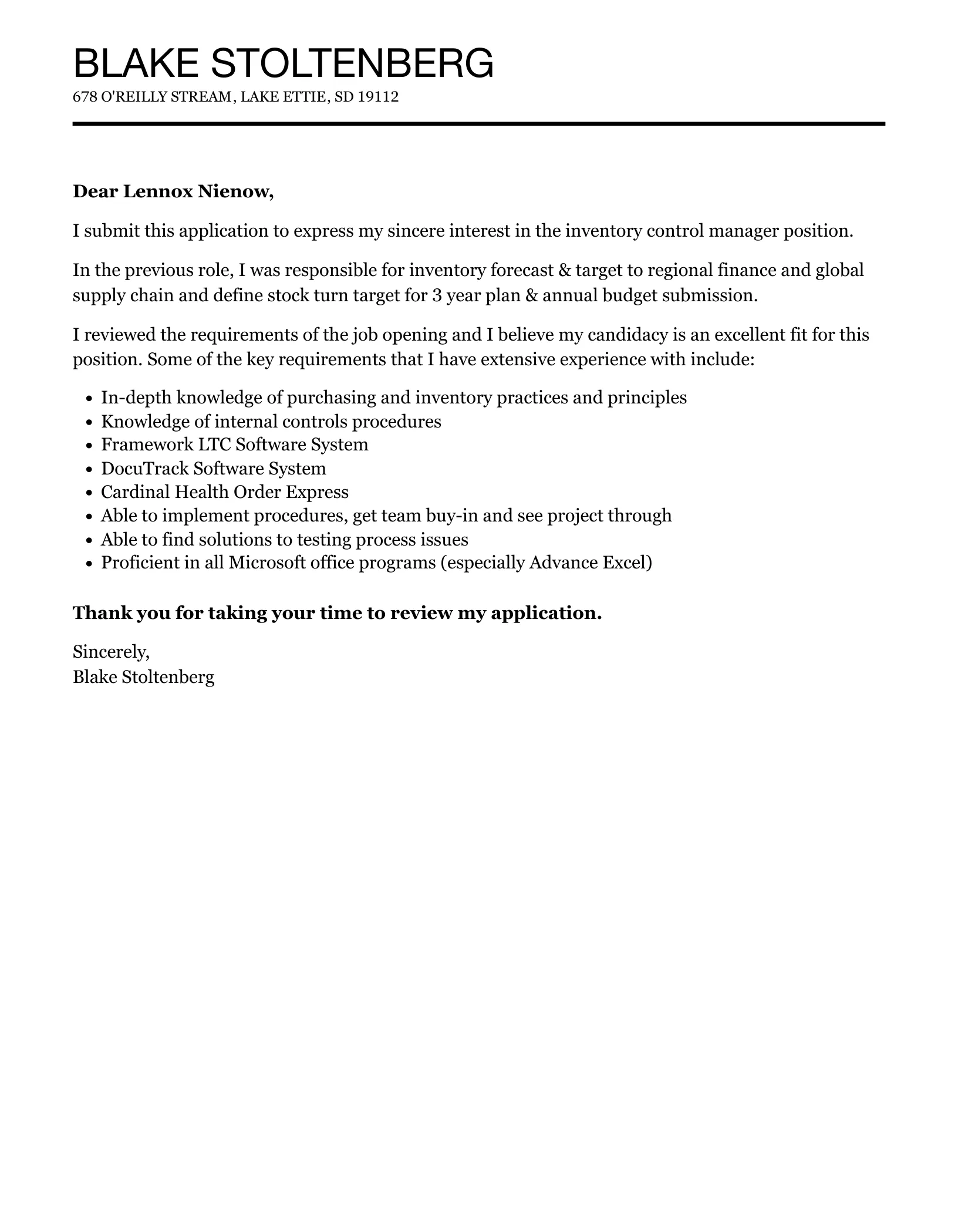
Each job description outlines specific requirements, and your cover letter should directly address these. Carefully review the job description, and identify the key skills, qualifications, and experiences the employer is seeking. Structure your cover letter to highlight how you meet those specific requirements. For instance, if the job requires experience with a particular software or management technique, be sure to explicitly mention your experience with it, and provide examples of how you’ve used it effectively. If the job requires specific certifications or experience in a particular industry, make sure to include this information in your letter. By addressing the job requirements directly, you demonstrate that you understand the position and are a strong match for the role. Customize your cover letter to ensure that the hiring manager sees how you can contribute to the company’s goals and meet their needs.
Proofreading and Editing
Proofreading and editing are crucial to make sure your cover letter presents a professional image. Errors can create a negative impression, and can make it seem like you lack attention to detail. After you’ve written your cover letter, carefully proofread it for any spelling, grammatical, or punctuation errors. Read your letter aloud, as this often helps you catch mistakes you might miss when reading silently. Consider asking a friend, colleague, or career counselor to review your cover letter as well. They can provide an objective view and catch errors that you might miss. Proofread for consistency in formatting, such as font, spacing, and the way you present dates and contact information. A well-edited and proofread cover letter will show that you are professional and take pride in your work.
Essential Keywords to Include
Inventory Management Software
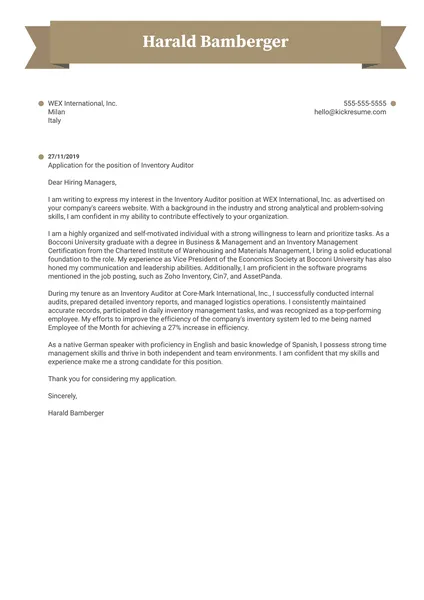
Including the right keywords in your cover letter can significantly improve your chances of being selected. Many companies use Applicant Tracking Systems (ATS) to scan cover letters and resumes for specific keywords. Research the job description, identify the key skills and technologies the employer is looking for, and integrate these keywords naturally throughout your cover letter. For example, if the job description mentions experience with specific inventory management software, be sure to mention those tools in your description. Make sure to include your skills with inventory management systems, such as SAP, Oracle, or other specialized tools. Also, list the software you have used for forecasting, data analysis, and other important tasks. Include the appropriate keywords in your cover letter to match the job posting and increase your chances of getting your application read by a human.
Supply Chain Management
Supply chain management is essential for inventory managers. Highlight any relevant experience and skills in supply chain management. This includes experience with procurement, logistics, warehousing, and distribution. You may have experience collaborating with vendors, negotiating contracts, or streamlining supply chain processes. Showcase your ability to work with other departments, like purchasing and logistics, to improve the efficiency of the supply chain. Mention any experience with vendor selection, contract management, and performance monitoring. Emphasize your understanding of supply chain principles and your ability to optimize processes to reduce costs and increase efficiency.
Data Analysis
Inventory management requires a data-driven approach, making data analysis skills vital. Mention your experience with analyzing inventory data to identify trends, optimize stock levels, and improve forecasting accuracy. Provide examples of how you have used data analysis tools, such as Excel, or other specialized software to create reports, make decisions, and solve inventory problems. Include details of your success in creating demand forecasts, minimizing stockouts, or reducing excess inventory. Show your proficiency in collecting and analyzing inventory data. Your data analysis skills will show that you are able to make informed decisions and contribute to the overall success of the organization.
Inventory Control Techniques
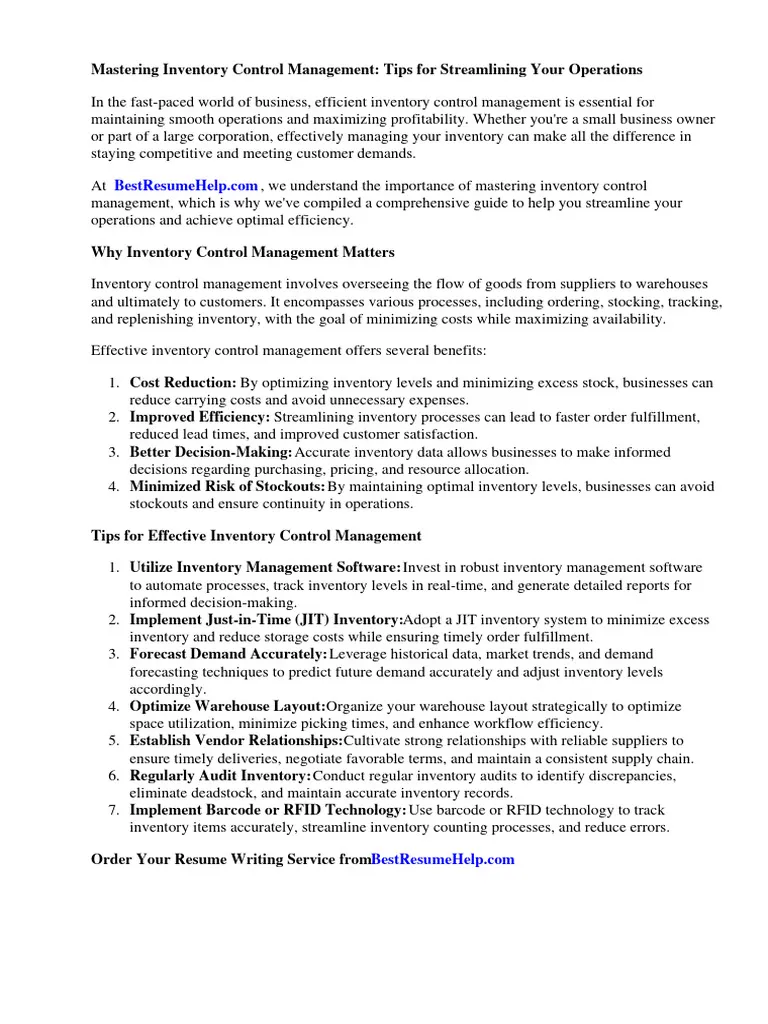
Highlight your knowledge of inventory control techniques. This includes cycle counting, ABC analysis, and safety stock management. Provide examples of how you have implemented these techniques to improve inventory accuracy, reduce waste, and optimize inventory levels. Explain how you have used these techniques to identify and resolve inventory discrepancies. Show your ability to apply techniques to improve inventory management. Highlight your experience with processes such as FIFO (First-In, First-Out) and LIFO (Last-In, First-Out) to manage the flow of goods effectively. If you have experience with any specialized inventory control methods, be sure to include these as well.
